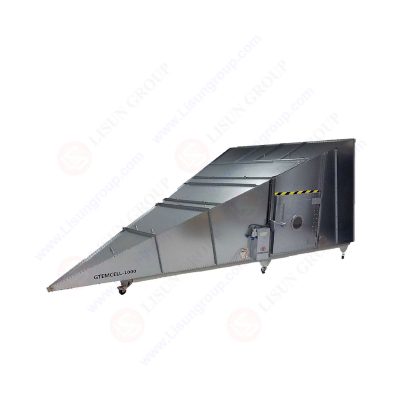

With the widespread use of electronic devices, electromagnetic interference (EMI) issues have become increasingly prominent. As a result, electromagnetic compatibility (EMC) testing has gained significant attention from companies. EMC testing is a complex process involving control techniques such as shielding, filtering, and grounding, as well as balancing and low-level techniques. Before addressing EMC issues, it is crucial to measure the electromagnetic characteristics of samples using testing equipment or systems to determine the appropriate improvement strategies.
Challenges in RF Electromagnetic Field Radiation Immunity Testing:
RF electromagnetic field radiation immunity is a critical component of EMC testing but presents several challenges for companies due to high costs associated with the required facilities and equipment. This testing requires an anechoic chamber and RF amplifier equipment. The construction of an anechoic chamber demands substantial space and structural support, typically available only in industrial settings. Additionally, RF amplifiers are often imported and expensive, making such tests difficult to conduct in office environments.
To overcome these challenges, GTEM (Gigahertz Transverse Electromagnetic) Chambers have emerged as a cost-effective alternative. GTEM Chambers have seen significant advancements over the past decade. They offer a wide frequency range from DC to several GHz, with a relatively large internal usable area. Importantly, GTEM Chambers and their associated equipment are generally more affordable, making them accessible to a broader range of businesses.
What is a GTEM Chamber?
A GTEM Chamber is an EMC testing device designed based on coaxial and asymmetric rectangular transmission line principles. To prevent internal electromagnetic wave reflections and resonances, the GTEM Chamber features a tapered design. It uses an N-type coaxial connector at the input, with the central conductor flattened into a fan-shaped plate (called the core plate), creating a rectangular, uniform field area between the core plate and the bottom plate.
Key Principles:
Electric Field Strength: The electric field strength inside the GTEM Chamber is proportional to the signal voltage V at the N-type connector and inversely proportional to the vertical distance h between the core plate and the bottom plate:E = V/h, In a 50Ω matched system, the voltage relationship V =(RP)1/2 =(50P)1/2 translates to an electric field strength of E =(50P)1/2 / h. A correction factor k is applied to account for discrepancies between measured and theoretical values, resulting in E = k(50P)1/2 / h
Design Features:
• Distance Between Core Plate and Bottom Plate: The closer the plates, the higher the field strength. Greater distances require higher input power.
• Distributed Resistance Matching Network: Ensures a no-reflection terminal for optimal spherical wave (approximately plane wave) transmission characteristics.
• Absorbing Material: Absorbing materials are applied to the chamber’s end faces to further absorb electromagnetic waves and ensure uniform field strength.
GTEM-2 GTEM Cell Chamber
Usage Considerations:
• Sample Placement: During testing, the sample should be placed within the test area without exceeding 1/3 of the core plate and bottom plate distance to avoid affecting field uniformity. For smaller samples, position them closer to the GTEM Chamber’s front to achieve adequate field strength with lower signal input power.
Advantages of the GTEM Chamber:
• Cost-Effective: GTEM Chambers significantly reduce construction and operational costs compared to traditional anechoic chambers and RF amplifiers.
• Space Efficiency: They can be installed and tested within office environments, eliminating the need for large industrial facilities.
• Broad Applicability: Suitable for various electronic devices, particularly those with moderate dimensions, for RF radiation immunity testing.
Conclusion
The GTEM Chamber offers a cost-effective solution for EMC testing, overcoming the limitations of traditional methods. It enables companies to conduct RF electromagnetic field radiation immunity tests within constrained spaces and budgets. The adoption of this innovative technology will advance the application and development of EMC testing across a wide range of industries. https://www.lisungroup.com/news/technology-news/rf-electromagnetic-field-radiation-immunity-solution-gtem-chambers.html


Comments
Post a Comment